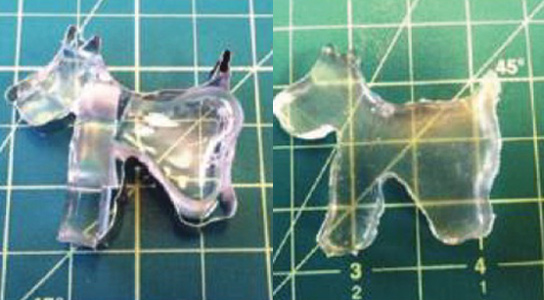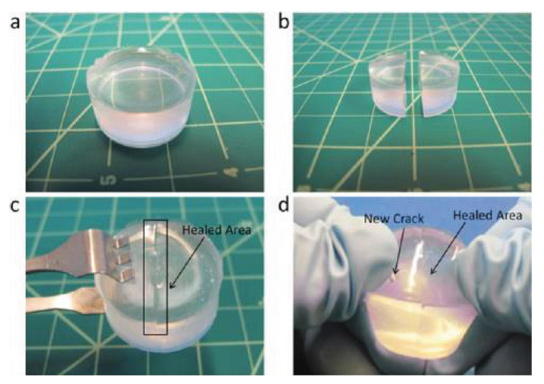
Self-healing organic polymers
There’s been a lot more research into self-healing organic polymers, but it’s only recently that a self-healing mechanism from more than 60 years ago was rediscovered. The process, which is called siloxane equilibration, allows silicone rubber that’s been cut in half to completely repair itself through heat-activated reversible bonding.

This self-healing mechanism could have many applications, from vehicles to countertops. The researchers from the University of Massachusetts, Thomas J. McCarthy and graduate student Peiwen Zheng, published their findings in a recent issue of Journal of the American Chemical Society. The rediscovered unusual properties of silicones were combined with siloxane equilibration, resulting in an obvious candidate for self-healing materials.
Scientists performed several experiments to test the theoretical predictions published in papers from the early 1950s. The silicone network, which is a chemically anionic equilibrium, reactivates and reforms a covalent siloxane bond. These bonds are reversible, allowing the two sides of a crack to reconnect under certain conditions.
The researchers performed different experiments, which all led to the conclusion that the samples were exceptionally self-healing. In principle, any cross-linked dimethylsilicone elastomer can be converted into a living elastomer by adding basic catalysts.
Reference: “A Surprise from 1954: Siloxane Equilibration Is a Simple, Robust, and Obvious Polymer Self-Healing Mechanism” by Peiwen Zheng and Thomas J. McCarthy, 18 January 2012, Journal of the American Chemical Society.
DOI: 10.1021/ja2113257









Be the first to comment on "Self-Healing Polymer Mechanism Rediscovered After 60 Years"